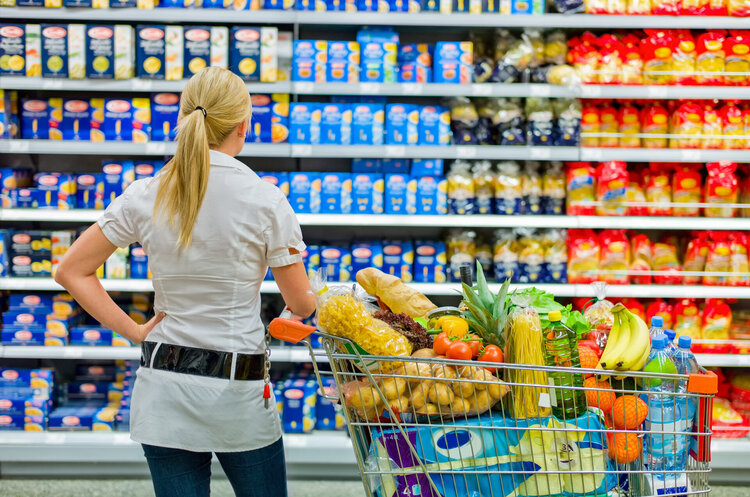Food prices usually go down in summer. What is atypical about this season?
The price decrease is recorded, but it is minimal and not for all product groups

The second half of summer is a traditional period for price reduction for most food products. Supply increases in various sectors, and the market receives a large amount of production that can serve as substitute goods for other groups.
Summer 2023 was no exception, however, the seasonal price decrease couldn't counter the record-breaking price increase recorded last year.
In July, consumer prices decreased compared to the previous month for the first time since August 2021. The decrease was minimal – by 2.1% compared to June, whereas in June, prices had increased by 0.1% compared to May.
Mind has investigated what is happening in the food market and what price trend can be expected in the coming months.
Which products have noticeably decreased in price recently?
As expected, the fruit and vegetable group has become cheaper, with its supply currently at its peak. It's not surprising that the price decrease is measured in double digits.
According to State Statistics data, in July 2023, consumer prices for white cabbage decreased by 48.9% compared to June, for onion by 34.2%, and for carrots by 30.4%.
Even after such a colossal price drop, the prices of these products still significantly exceed the figures from December 2022, including onions by 17.9%, cabbage by 1.8 times, and carrots by 2.1 times.
The price level of eggs has also decreased (-4.1% compared to May), as well as fruits (-1.3%), sunflower oil (-0.8%), pasta (-0.2%), and also bread and bakery products (-0.1%).
Which product groups have gone against the seasonal trend?
Practically all processed food products and animal products have gone against the seasonal trend.
The reasons behind this are high fuel and energy prices, as well as the high energy intensity of production processes in these sectors.
Prices for meat and meat products continue to rise (+1.4% compared to June), as well as fish and fish products (+0.7%). Additionally, in June, decreases turned into price increases for cheeses (+0.3% compared to -0.5% in May), oil (+0.3% compared to -0.1%), and milk (+0.2% compared to -0.5%). Moreover, the upward trend in sugar prices has also resumed: +1.2% compared to zero growth in June.
As a result, the overall decrease in prices for the food basket in July turned out to be quite modest, and in August, the downward trend could likely be halted.
What price dynamics is expected in the medium-term perspective?
According to Yuriy Lupenko, the director of the National Scientific Centre "Institute of Agricultural Economics" and member of the National Academy of Agrarian Sciences, further decreases in consumer prices for vegetables are anticipated. Specifically, last year, prices for cabbage decreased from July 2022 to January 2023, and prices for carrots decreased from August to December of the previous year.
However, there are signs of the cessation of further development of the downward price trend. While there was a prolonged decrease in consumer prices for beets from August 2022 to May 2023, with their increase resuming only in June 2023 (+7.7%), in July, they increased by a record 3.1 times.
Similarly, after a prolonged decrease observed from August 2022 to May 2023, there was a record increase of 1.7 times in potato prices. All these factors suggest the possibility of price increases for other types of vegetables, as highlighted by the Institute of Agricultural Economics.
How does the government control the price dynamics of food products?
The primary method of price control is preventive in nature, involving the monitoring of price changes.
On August 15th, these measures were slightly relaxed: the Cabinet of Ministers made changes to the order "On Measures for Monitoring and Analysing Prices and the State of Commodity Markets", which was adopted in January 2022.
So, whereas previously, the State Statistics Service monitored consumer prices for staple foods on a daily basis, the monitoring period has now been extended to a week.
Furthermore, the provision that the State Service of Ukraine on Food Safety and Consumer Protection conducts a weekly analysis of declared retail prices for products of significant social importance and products of epidemic-preventive purpose has been cancelled.
If you have read this article to the end, we hope that means it was useful for you.
We work to ensure that our journalistic and analytical work is of high quality, and we strive to perform it as competently as possible. This also requires financial independence. Support us for only UAH 196 per month.
Become a Mind subscriber for just USD 5 per month and support the development of independent business journalism!
You can unsubscribe at any time in your LIQPAY account or by sending us an email: [email protected]


